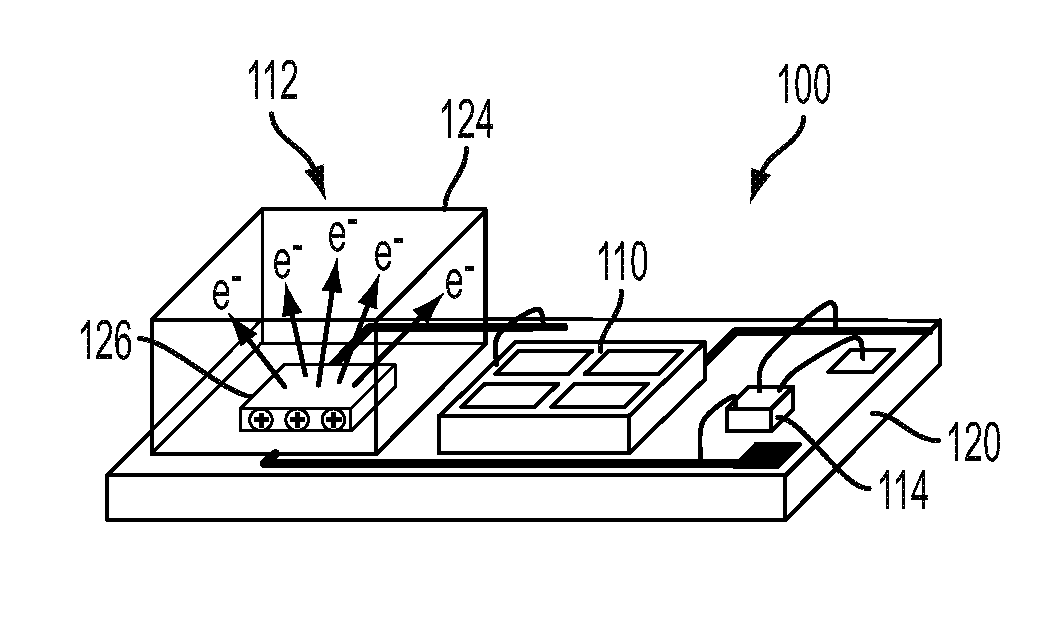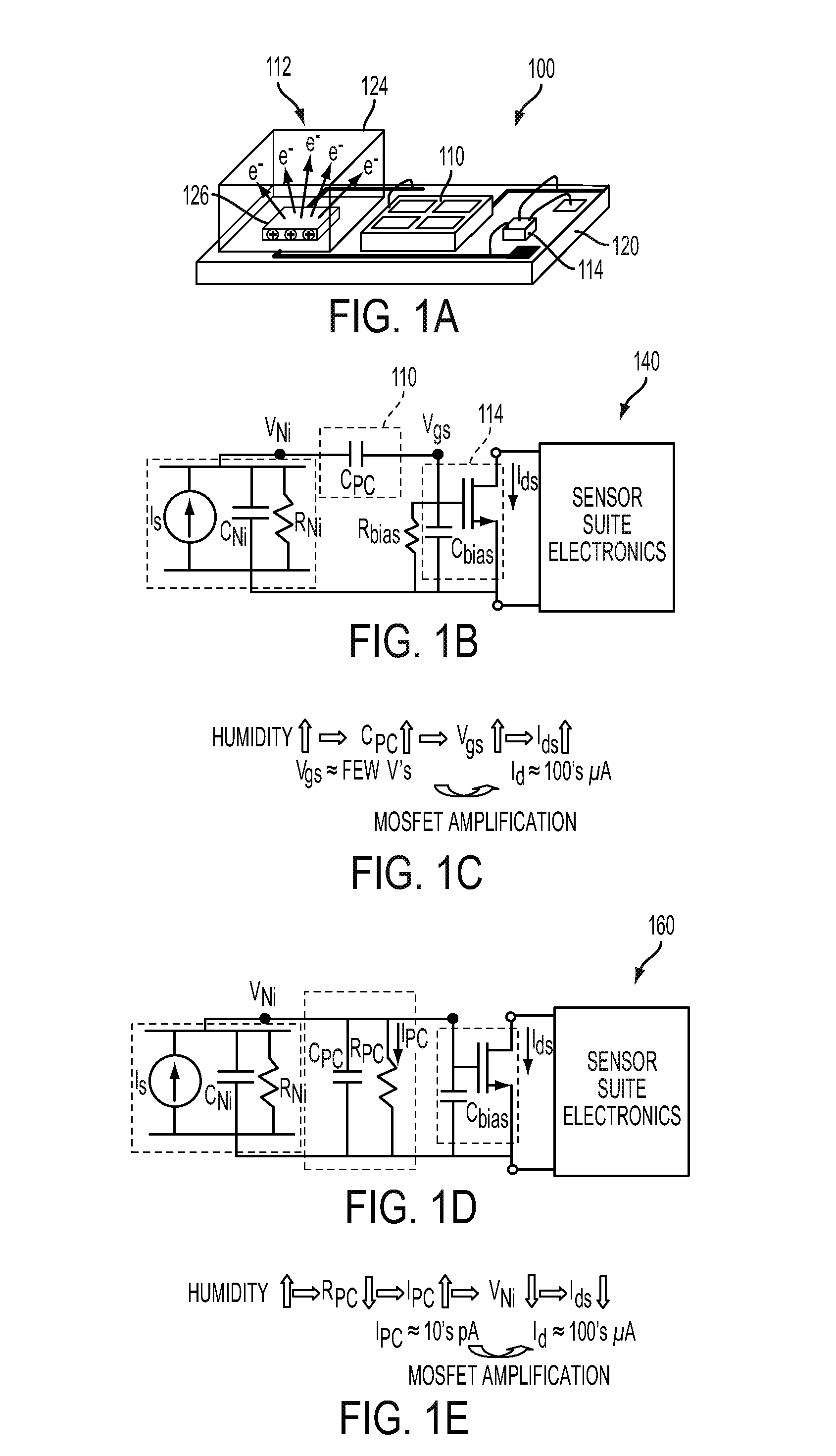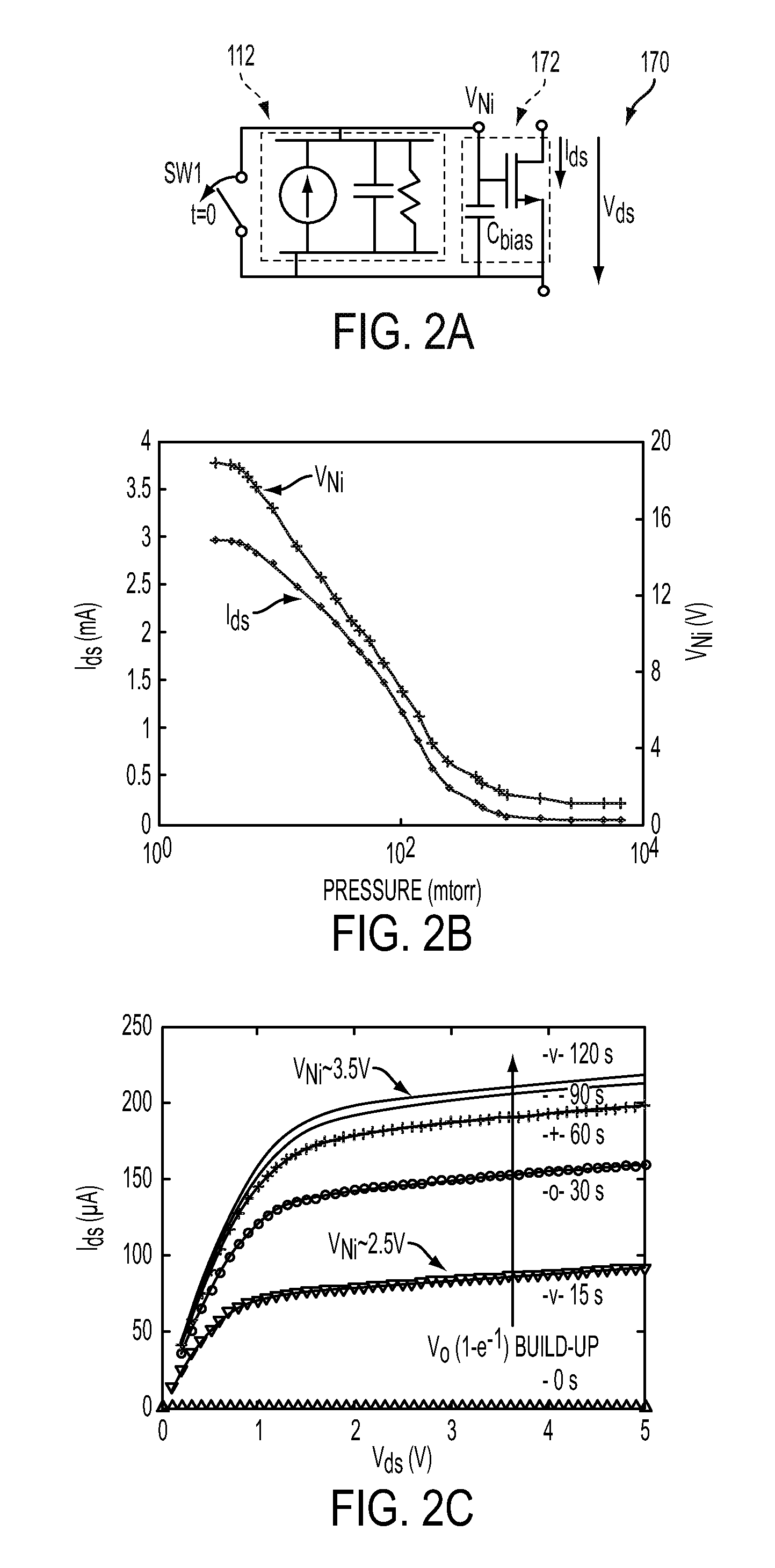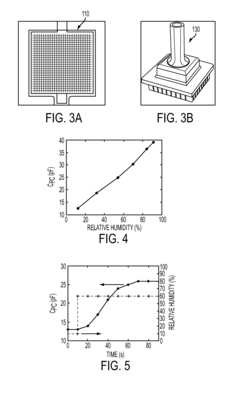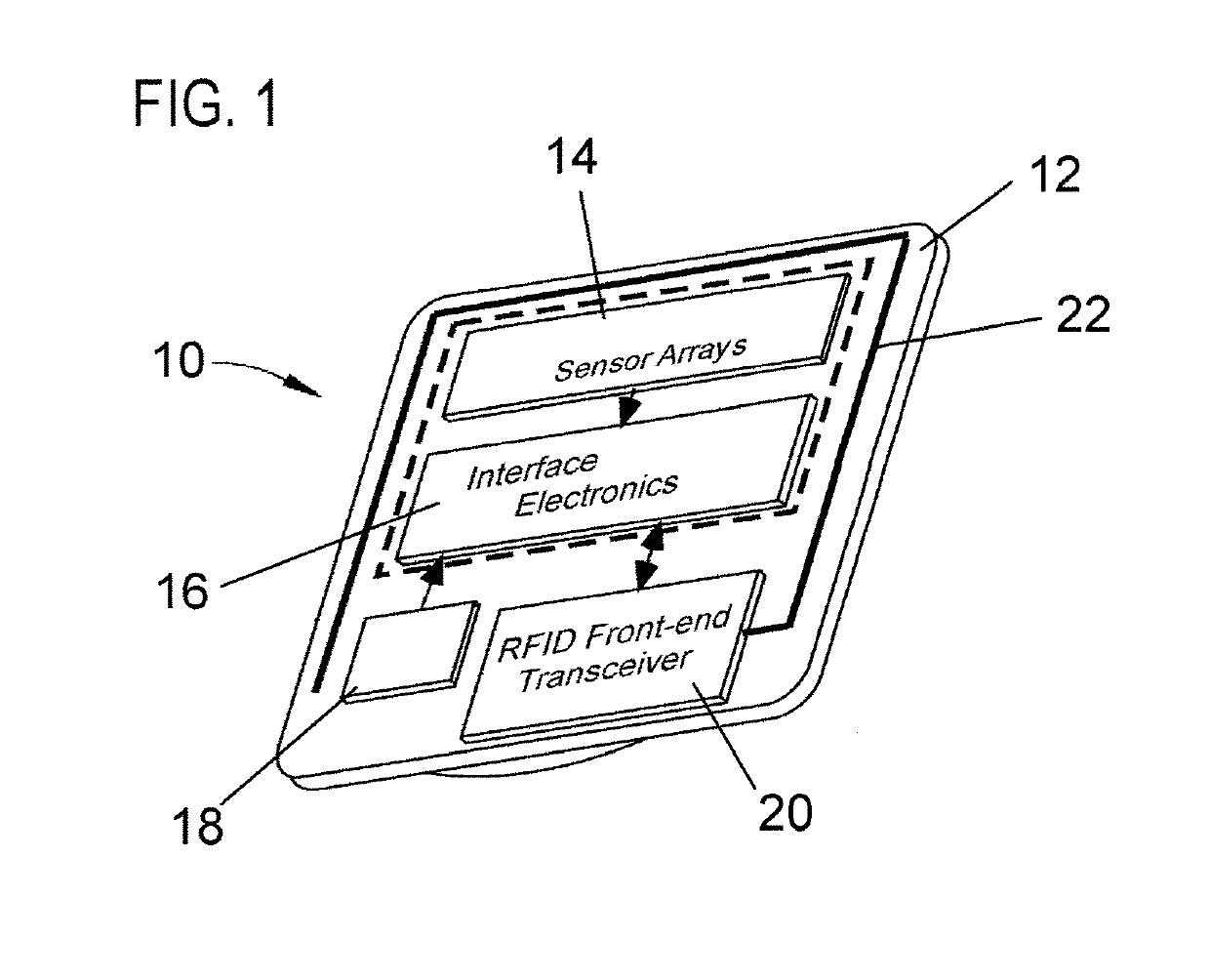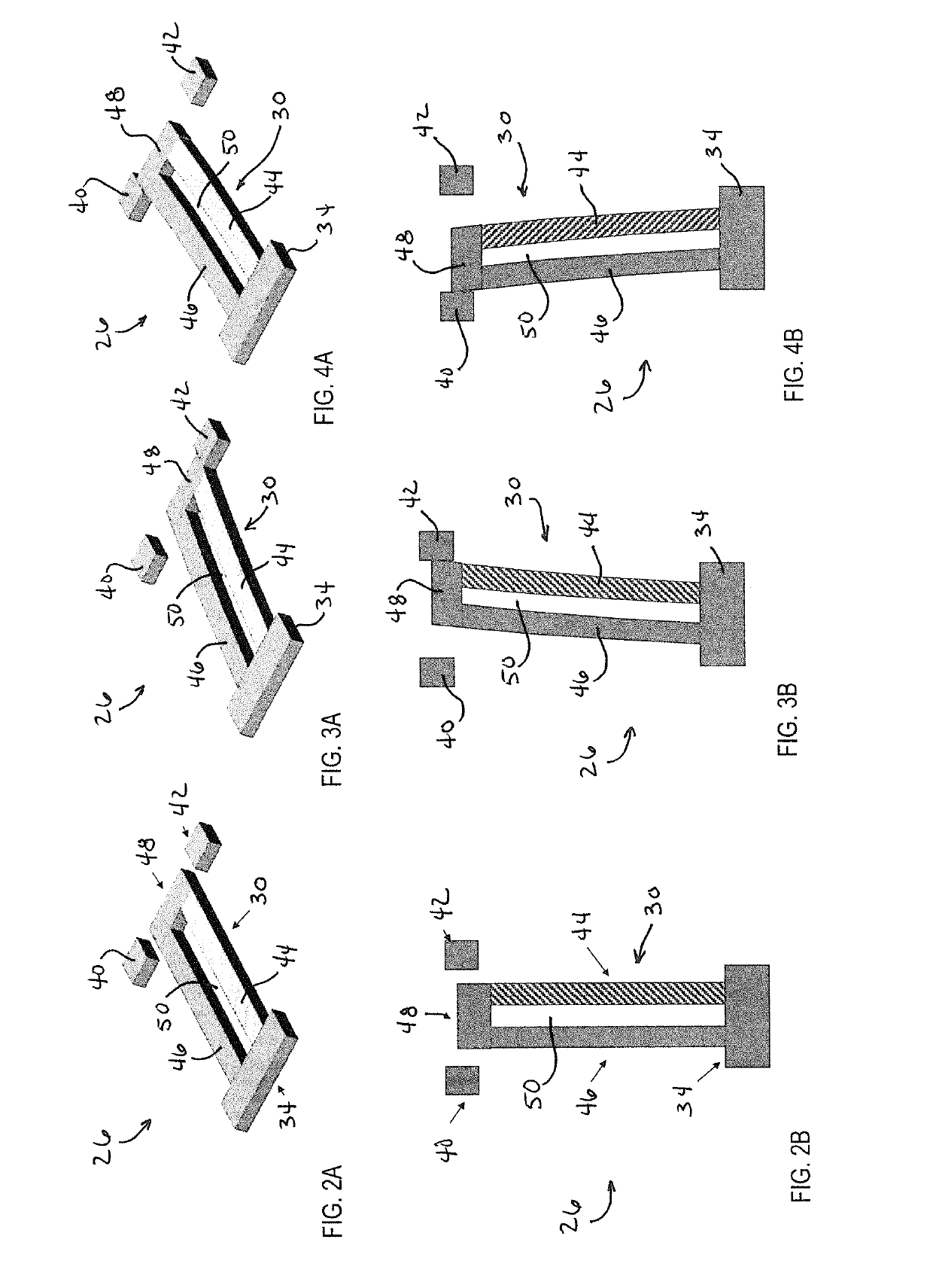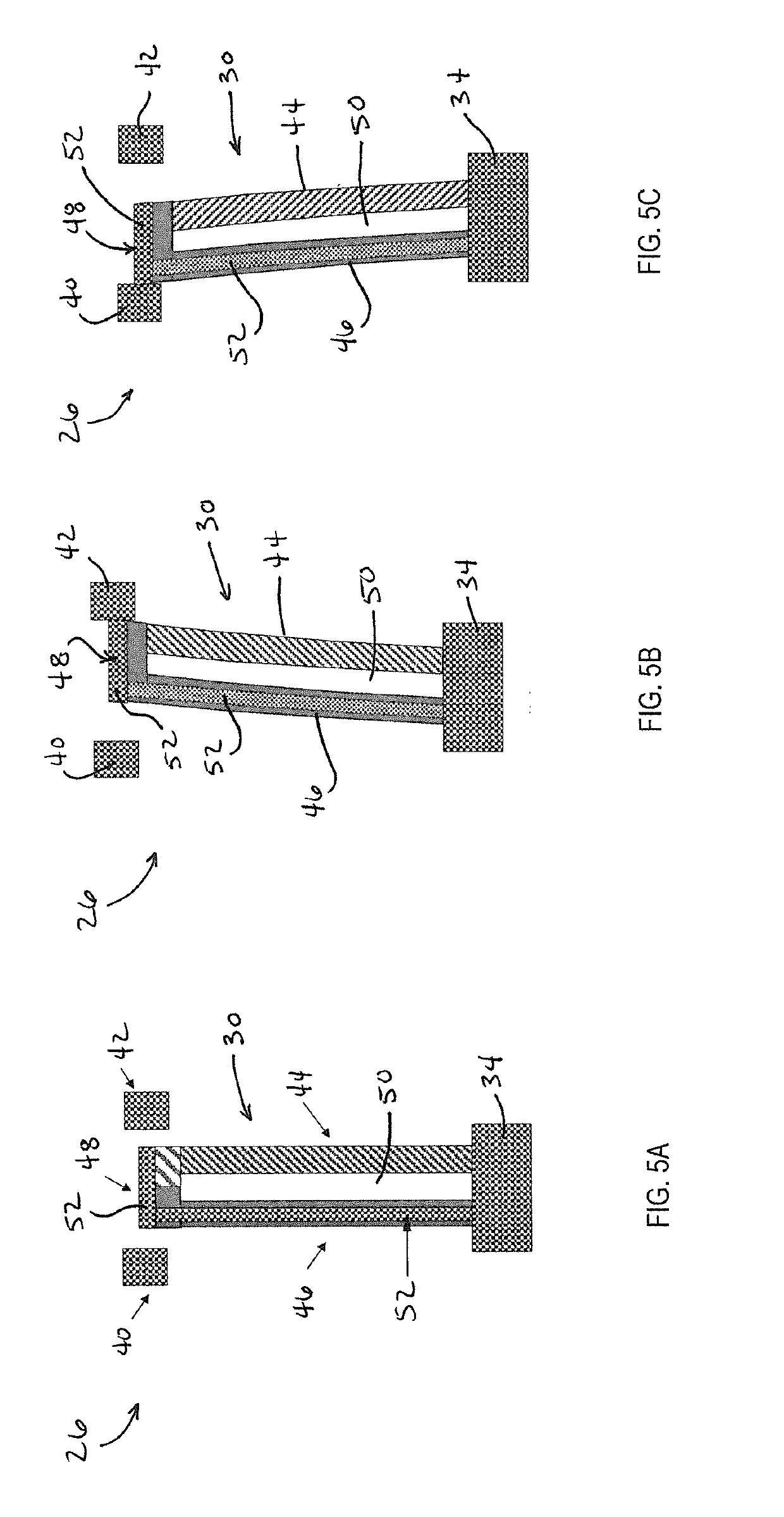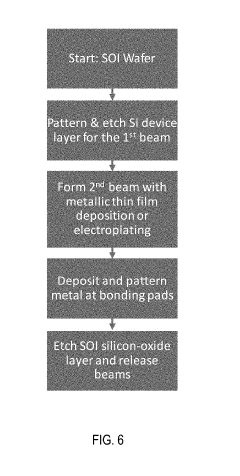Role of Self-Powered Sensors in Environmental Policy Compliance
OCT 21, 20259 MIN READ
Generate Your Research Report Instantly with AI Agent
Patsnap Eureka helps you evaluate technical feasibility & market potential.
Self-Powered Sensing Technology Background and Objectives
Self-powered sensing technology has evolved significantly over the past two decades, transforming from laboratory curiosities to practical solutions for environmental monitoring. The journey began with basic energy harvesting mechanisms in the early 2000s, primarily focused on solar and mechanical energy conversion. By 2010, advancements in materials science and miniaturization techniques enabled the development of more efficient and compact self-powered sensors capable of operating in diverse environmental conditions.
The technological evolution has been driven by the convergence of several fields, including energy harvesting, low-power electronics, wireless communication, and advanced materials. Particularly noteworthy is the development of triboelectric nanogenerators (TENGs) and piezoelectric materials that can generate electricity from ambient mechanical energy, as well as improvements in thermoelectric generators that convert temperature differentials into usable power.
Current self-powered sensing technologies primarily utilize energy from environmental sources such as solar radiation, mechanical vibration, thermal gradients, and electromagnetic waves. These technologies have reached a maturity level where they can reliably power sensors for extended periods without battery replacement, making them ideal for remote environmental monitoring applications related to policy compliance.
The primary objective of self-powered sensing technology in environmental policy compliance is to create autonomous, maintenance-free monitoring systems that can continuously collect and transmit environmental data from diverse and often remote locations. These systems aim to provide real-time, accurate measurements of various environmental parameters such as air quality, water quality, soil conditions, and noise levels, which are critical for assessing compliance with environmental regulations.
Another key objective is to reduce the environmental footprint of monitoring systems themselves. Traditional sensor networks often rely on batteries that require regular replacement and proper disposal, creating logistical challenges and potential environmental hazards. Self-powered sensors address this contradiction by eliminating battery waste while enabling more comprehensive environmental monitoring.
Looking forward, the technology trajectory points toward increasingly integrated systems that combine multiple energy harvesting mechanisms to ensure reliable operation under varying environmental conditions. There is also a clear trend toward edge computing capabilities within these sensors, allowing for preliminary data processing and analysis at the source, thereby reducing communication bandwidth requirements and enabling more intelligent and responsive environmental monitoring systems.
The ultimate technological goal is to develop ubiquitous environmental sensing networks that can operate indefinitely without human intervention, providing continuous, high-resolution data streams that support both regulatory compliance and scientific understanding of environmental systems and their responses to human activities and policy interventions.
The technological evolution has been driven by the convergence of several fields, including energy harvesting, low-power electronics, wireless communication, and advanced materials. Particularly noteworthy is the development of triboelectric nanogenerators (TENGs) and piezoelectric materials that can generate electricity from ambient mechanical energy, as well as improvements in thermoelectric generators that convert temperature differentials into usable power.
Current self-powered sensing technologies primarily utilize energy from environmental sources such as solar radiation, mechanical vibration, thermal gradients, and electromagnetic waves. These technologies have reached a maturity level where they can reliably power sensors for extended periods without battery replacement, making them ideal for remote environmental monitoring applications related to policy compliance.
The primary objective of self-powered sensing technology in environmental policy compliance is to create autonomous, maintenance-free monitoring systems that can continuously collect and transmit environmental data from diverse and often remote locations. These systems aim to provide real-time, accurate measurements of various environmental parameters such as air quality, water quality, soil conditions, and noise levels, which are critical for assessing compliance with environmental regulations.
Another key objective is to reduce the environmental footprint of monitoring systems themselves. Traditional sensor networks often rely on batteries that require regular replacement and proper disposal, creating logistical challenges and potential environmental hazards. Self-powered sensors address this contradiction by eliminating battery waste while enabling more comprehensive environmental monitoring.
Looking forward, the technology trajectory points toward increasingly integrated systems that combine multiple energy harvesting mechanisms to ensure reliable operation under varying environmental conditions. There is also a clear trend toward edge computing capabilities within these sensors, allowing for preliminary data processing and analysis at the source, thereby reducing communication bandwidth requirements and enabling more intelligent and responsive environmental monitoring systems.
The ultimate technological goal is to develop ubiquitous environmental sensing networks that can operate indefinitely without human intervention, providing continuous, high-resolution data streams that support both regulatory compliance and scientific understanding of environmental systems and their responses to human activities and policy interventions.
Environmental Monitoring Market Demand Analysis
The environmental monitoring market is experiencing unprecedented growth driven by increasing regulatory pressures, public awareness of environmental issues, and technological advancements. The global environmental monitoring market was valued at approximately $19.9 billion in 2021 and is projected to reach $30.7 billion by 2026, growing at a CAGR of 9.1%. Self-powered sensors represent a significant innovation within this expanding market, addressing key pain points in traditional monitoring systems.
Regulatory compliance requirements across industries have become more stringent, particularly in sectors such as manufacturing, energy production, and resource extraction. The European Union's Industrial Emissions Directive, the U.S. Clean Air Act, and similar regulations in Asia-Pacific regions have created substantial demand for continuous environmental monitoring solutions. Self-powered sensors offer a compelling value proposition for organizations seeking to meet these compliance requirements while minimizing operational costs.
Market research indicates that air quality monitoring currently represents the largest segment within environmental monitoring, accounting for approximately 35% of the total market. Water quality monitoring follows closely at 28%, with soil contamination, noise pollution, and radiation monitoring comprising the remaining segments. Self-powered sensors have demonstrated particular efficacy in remote and distributed monitoring applications, where traditional power infrastructure is limited or unavailable.
The commercial sector shows the highest adoption rate for environmental monitoring technologies at 42%, followed by government/municipal applications at 31%, and residential applications at 27%. This distribution reflects the primary drivers of market demand: regulatory compliance, corporate sustainability initiatives, and public health concerns. Self-powered sensors address all three drivers by enabling more comprehensive monitoring networks with reduced infrastructure requirements.
Geographic analysis reveals that North America currently leads the environmental monitoring market with a 38% share, followed by Europe at 29%, Asia-Pacific at 24%, and the rest of the world at 9%. However, the highest growth rates are projected in developing economies, particularly in the Asia-Pacific region, where rapid industrialization and urbanization are creating urgent environmental challenges alongside stricter regulatory frameworks.
Customer pain points in the environmental monitoring market include high installation and maintenance costs, power supply limitations in remote locations, data transmission challenges, and system reliability concerns. Self-powered sensors directly address these issues by eliminating the need for external power sources, reducing maintenance requirements, and enabling deployment in previously inaccessible locations. Market surveys indicate that organizations are willing to pay a premium of 15-20% for monitoring solutions that reduce total cost of ownership through lower maintenance and extended operational lifespans.
Regulatory compliance requirements across industries have become more stringent, particularly in sectors such as manufacturing, energy production, and resource extraction. The European Union's Industrial Emissions Directive, the U.S. Clean Air Act, and similar regulations in Asia-Pacific regions have created substantial demand for continuous environmental monitoring solutions. Self-powered sensors offer a compelling value proposition for organizations seeking to meet these compliance requirements while minimizing operational costs.
Market research indicates that air quality monitoring currently represents the largest segment within environmental monitoring, accounting for approximately 35% of the total market. Water quality monitoring follows closely at 28%, with soil contamination, noise pollution, and radiation monitoring comprising the remaining segments. Self-powered sensors have demonstrated particular efficacy in remote and distributed monitoring applications, where traditional power infrastructure is limited or unavailable.
The commercial sector shows the highest adoption rate for environmental monitoring technologies at 42%, followed by government/municipal applications at 31%, and residential applications at 27%. This distribution reflects the primary drivers of market demand: regulatory compliance, corporate sustainability initiatives, and public health concerns. Self-powered sensors address all three drivers by enabling more comprehensive monitoring networks with reduced infrastructure requirements.
Geographic analysis reveals that North America currently leads the environmental monitoring market with a 38% share, followed by Europe at 29%, Asia-Pacific at 24%, and the rest of the world at 9%. However, the highest growth rates are projected in developing economies, particularly in the Asia-Pacific region, where rapid industrialization and urbanization are creating urgent environmental challenges alongside stricter regulatory frameworks.
Customer pain points in the environmental monitoring market include high installation and maintenance costs, power supply limitations in remote locations, data transmission challenges, and system reliability concerns. Self-powered sensors directly address these issues by eliminating the need for external power sources, reducing maintenance requirements, and enabling deployment in previously inaccessible locations. Market surveys indicate that organizations are willing to pay a premium of 15-20% for monitoring solutions that reduce total cost of ownership through lower maintenance and extended operational lifespans.
Self-Powered Sensor Development Status and Challenges
Self-powered sensor technology has evolved significantly over the past decade, with notable advancements in energy harvesting mechanisms, power management systems, and sensor miniaturization. Currently, these sensors primarily utilize energy harvesting from ambient sources including solar, thermal, mechanical vibration, and RF energy. The global development landscape shows varying levels of maturity, with North America and Europe leading in research innovation while Asia-Pacific regions dominate manufacturing capabilities.
Despite promising developments, self-powered sensors face several critical challenges that limit their widespread adoption for environmental policy compliance applications. Power generation capacity remains insufficient for continuous high-frequency monitoring, with most current solutions providing only intermittent operation capabilities. Energy harvesting efficiency typically ranges between 10-30% depending on the technology, which proves inadequate for power-intensive sensing applications requiring real-time data transmission.
Environmental resilience presents another significant hurdle, as sensors deployed for compliance monitoring must withstand harsh conditions including extreme temperatures, humidity, and chemical exposure. Current encapsulation technologies offer limited protection without compromising energy harvesting capabilities. Additionally, the reliability of power generation varies considerably with environmental conditions, creating inconsistent monitoring capabilities that undermine regulatory compliance requirements.
Data transmission represents a particular challenge for self-powered environmental sensors. While low-power communication protocols like LoRaWAN and Zigbee have improved efficiency, the energy demands of wireless communication often exceed harvesting capabilities, necessitating compromises in sampling frequency and data resolution that may not meet regulatory standards.
Standardization remains underdeveloped in this emerging field, with various proprietary solutions creating interoperability issues across monitoring networks. This fragmentation complicates large-scale deployment for environmental compliance monitoring, where data integration across multiple systems is essential for comprehensive regulatory oversight.
Cost factors continue to inhibit widespread adoption, with current self-powered sensor systems typically costing 3-5 times more than their battery-powered counterparts. While lifecycle cost analyses demonstrate potential long-term advantages through reduced maintenance, the higher initial investment presents adoption barriers for environmental agencies and regulated industries operating under budget constraints.
Recent technological breakthroughs in materials science offer promising pathways forward, particularly in the development of high-efficiency piezoelectric nanogenerators and multi-source energy harvesting systems. These innovations could potentially address the power density limitations that currently restrict the application of self-powered sensors in comprehensive environmental compliance monitoring programs.
Despite promising developments, self-powered sensors face several critical challenges that limit their widespread adoption for environmental policy compliance applications. Power generation capacity remains insufficient for continuous high-frequency monitoring, with most current solutions providing only intermittent operation capabilities. Energy harvesting efficiency typically ranges between 10-30% depending on the technology, which proves inadequate for power-intensive sensing applications requiring real-time data transmission.
Environmental resilience presents another significant hurdle, as sensors deployed for compliance monitoring must withstand harsh conditions including extreme temperatures, humidity, and chemical exposure. Current encapsulation technologies offer limited protection without compromising energy harvesting capabilities. Additionally, the reliability of power generation varies considerably with environmental conditions, creating inconsistent monitoring capabilities that undermine regulatory compliance requirements.
Data transmission represents a particular challenge for self-powered environmental sensors. While low-power communication protocols like LoRaWAN and Zigbee have improved efficiency, the energy demands of wireless communication often exceed harvesting capabilities, necessitating compromises in sampling frequency and data resolution that may not meet regulatory standards.
Standardization remains underdeveloped in this emerging field, with various proprietary solutions creating interoperability issues across monitoring networks. This fragmentation complicates large-scale deployment for environmental compliance monitoring, where data integration across multiple systems is essential for comprehensive regulatory oversight.
Cost factors continue to inhibit widespread adoption, with current self-powered sensor systems typically costing 3-5 times more than their battery-powered counterparts. While lifecycle cost analyses demonstrate potential long-term advantages through reduced maintenance, the higher initial investment presents adoption barriers for environmental agencies and regulated industries operating under budget constraints.
Recent technological breakthroughs in materials science offer promising pathways forward, particularly in the development of high-efficiency piezoelectric nanogenerators and multi-source energy harvesting systems. These innovations could potentially address the power density limitations that currently restrict the application of self-powered sensors in comprehensive environmental compliance monitoring programs.
Current Self-Powered Solutions for Policy Compliance
01 Energy harvesting mechanisms for self-powered sensors
Various energy harvesting mechanisms can be employed to power sensors autonomously. These include piezoelectric elements that convert mechanical vibrations into electrical energy, thermoelectric generators that utilize temperature differentials, and photovoltaic cells that convert light into electricity. These energy harvesting technologies enable sensors to operate without external power sources, making them suitable for remote or inaccessible locations.- Energy harvesting mechanisms for self-powered sensors: Various energy harvesting mechanisms can be employed to power sensors autonomously. These include piezoelectric generators that convert mechanical vibrations into electrical energy, thermoelectric generators that utilize temperature differentials, and photovoltaic cells that convert light energy. These harvesting technologies enable sensors to operate without external power sources, making them suitable for remote or inaccessible locations.
- Wireless self-powered sensor networks: Self-powered sensors can be integrated into wireless sensor networks for various applications. These networks utilize energy-efficient communication protocols and power management strategies to extend operational lifetimes. The sensors can collect and transmit data without requiring wired power connections, enabling deployment in challenging environments and reducing installation complexity.
- Motion and vibration-based energy harvesting: Motion and vibration can be harnessed to power sensors in dynamic environments. These systems typically employ electromagnetic induction or piezoelectric materials to convert kinetic energy into electrical power. Applications include vehicle monitoring, structural health monitoring, and wearable devices where regular movement provides a consistent energy source for sensor operation.
- Thermal energy harvesting for sensor applications: Thermal gradients can be exploited to generate power for sensors using thermoelectric materials. These systems convert temperature differences between the environment and a heat source into electrical energy. This approach is particularly useful in industrial settings, equipment monitoring, and body-powered wearable sensors where temperature differentials naturally exist.
- Integrated power management for self-powered sensors: Advanced power management circuits are essential for optimizing the performance of self-powered sensors. These systems include energy storage elements, low-power electronics, and intelligent power distribution mechanisms. They ensure efficient use of harvested energy, provide stable power during harvesting fluctuations, and implement sleep/wake cycles to conserve energy when sensing is not required.
02 Wireless self-powered sensor networks
Self-powered sensors can be integrated into wireless sensor networks for distributed monitoring applications. These networks utilize energy-efficient communication protocols to transmit data while minimizing power consumption. The sensors harvest ambient energy from their environment, eliminating the need for wired power connections or frequent battery replacements, which is particularly valuable for large-scale deployments in industrial, environmental, or structural monitoring applications.Expand Specific Solutions03 Triboelectric and mechanical motion-based energy harvesting
Triboelectric nanogenerators and mechanical motion-based energy harvesting systems can power sensors by converting everyday mechanical movements into electrical energy. These systems utilize friction, vibration, or rotational motion to generate electricity. Applications include wearable health monitors powered by body movement, vehicle sensors powered by road vibrations, and industrial sensors powered by machinery vibrations, enabling continuous operation without external power sources.Expand Specific Solutions04 Integrated power management systems for self-powered sensors
Advanced power management systems are crucial for optimizing the operation of self-powered sensors. These systems include energy storage components like supercapacitors or thin-film batteries, power conditioning circuits, and intelligent power distribution algorithms. They efficiently store harvested energy, regulate voltage output, and implement sleep/wake cycles to maximize sensor operational time while managing intermittent energy availability from harvesting sources.Expand Specific Solutions05 Application-specific self-powered sensor designs
Self-powered sensors are being designed for specific applications with customized energy harvesting mechanisms. These include environmental sensors powered by ambient light or temperature gradients, structural health monitoring sensors powered by building vibrations, and biomedical sensors powered by body heat or motion. The sensor design integrates both the sensing element and the energy harvesting mechanism in a compact form factor optimized for the specific deployment environment.Expand Specific Solutions
Leading Companies in Self-Powered Environmental Sensing
The self-powered sensor market for environmental policy compliance is currently in a growth phase, with increasing adoption driven by sustainability regulations and IoT integration. The market is projected to expand significantly as environmental monitoring requirements become more stringent globally. Technologically, the field shows varying maturity levels across players. EnOcean GmbH and Gentle Energy Corp. lead with established energy harvesting solutions, while Robert Bosch GmbH and Siemens AG leverage their industrial expertise to develop integrated compliance systems. University research centers like UESTC and Case Western Reserve contribute fundamental innovations. Companies such as SPEC Sensors and Clear Blue Technologies are developing specialized applications, while automotive manufacturers including BMW and Hyundai are incorporating these technologies into vehicle environmental compliance systems.
EnOcean GmbH
Technical Solution: EnOcean has pioneered energy harvesting wireless technology for self-powered sensors in environmental monitoring. Their technology utilizes ambient energy sources (kinetic, solar, thermal) to power wireless sensors without batteries. EnOcean's self-powered sensors employ proprietary ultra-low power radio protocols operating in sub-GHz bands (868 MHz in Europe, 902 MHz in North America) that transmit data with minimal energy consumption. Their sensors incorporate energy converters that transform small amounts of environmental energy into electrical power, storing it in capacitors for transmission bursts. For environmental policy compliance, EnOcean has developed specialized sensors that monitor air quality, temperature, humidity, CO2 levels, and occupancy patterns in buildings, enabling automated HVAC optimization that reduces energy consumption by up to 30% while maintaining compliance with indoor air quality regulations. Their self-powered wireless switches and sensors have been deployed in over 500,000 buildings worldwide, supporting green building certifications like LEED and BREEAM.
Strengths: Complete energy autonomy eliminates battery replacement and associated waste; wireless nature allows flexible deployment in hard-to-reach locations; maintenance-free operation reduces lifecycle costs and environmental impact. Weaknesses: Limited power availability constrains sensing frequency and data transmission rates; may require supplementary energy in low-light or low-movement environments; higher initial cost compared to conventional battery-powered sensors.
SPEC Sensors LLC
Technical Solution: SPEC Sensors has developed ultra-low power electrochemical gas sensor technology specifically designed for self-powered environmental monitoring applications. Their proprietary digital gas sensors consume as little as 10-50 μW during operation, making them compatible with energy harvesting power sources. SPEC's sensors utilize advanced screen-printed electrode technology that enables high sensitivity detection of criteria pollutants including ozone, nitrogen dioxide, sulfur dioxide, carbon monoxide, and volatile organic compounds at parts-per-billion levels. For environmental policy compliance, SPEC has created integrated sensor modules that combine their low-power gas sensors with energy harvesting components (solar, thermal, or vibration-based) and wireless communication capabilities. These self-powered sensor nodes can be deployed in dense networks across industrial facilities, urban environments, or along facility perimeters to create continuous emissions monitoring systems that verify compliance with environmental regulations. The company's sensors have been incorporated into EPA-approved supplemental monitoring networks in multiple U.S. cities, providing high-resolution spatial data on air quality that complements traditional regulatory monitoring stations at a fraction of the cost.
Strengths: Extremely low power consumption enables true self-powered operation; high specificity and sensitivity to target gases; small form factor allows deployment in space-constrained locations. Weaknesses: Electrochemical sensors have limited lifespan (typically 1-2 years) requiring periodic replacement; cross-sensitivity to non-target gases can affect measurement accuracy; performance can be impacted by temperature and humidity variations.
Key Patents and Innovations in Self-Powered Sensing
Self-powered environmental sensor with wake-up circuitry
PatentInactiveUS8309942B2
Innovation
- The development of zero-power sensors using radioisotope-powered humidity and temperature sensors with self-powered capacitors and mechanical amplifiers, employing Nickel-63 as a safe radioisotope source, which modulates conductance in MOSFETs for energy-efficient operation and high sensitivity detection.
Sensing devices, sensors, and methods for monitoring environmental conditions
PatentActiveUS20190172657A1
Innovation
- The use of electromechanical cantilevered structures with dissimilar materials that deflect to open or close contacts in response to environmental parameters, allowing for self-powered sensing without a dedicated power source, utilizing the parameter itself to generate a digital output.
Regulatory Framework Impact on Sensor Deployment
The regulatory landscape governing environmental monitoring has evolved significantly, creating both opportunities and challenges for self-powered sensor deployment. Environmental legislation across major economies increasingly mandates continuous monitoring of emissions, water quality, and other environmental parameters, driving demand for autonomous sensing solutions. The EU's Industrial Emissions Directive and the US Clean Air Act amendments specifically require real-time monitoring capabilities that self-powered sensors are uniquely positioned to fulfill.
These regulatory frameworks typically establish minimum performance standards for monitoring equipment, including accuracy requirements, calibration frequencies, and data reporting protocols. Self-powered sensors must meet these technical specifications to be considered compliant monitoring tools. For instance, the ISO 14001 environmental management standard and related certification processes have begun incorporating provisions for autonomous monitoring technologies, creating pathways for formal recognition of self-powered sensing solutions.
Regulatory compliance costs represent a significant market driver, with organizations facing substantial penalties for environmental violations. This economic reality creates a compelling value proposition for self-powered sensors that can provide continuous compliance verification while minimizing operational expenses. The cost-benefit analysis increasingly favors investment in autonomous monitoring infrastructure over traditional manual sampling approaches.
Regional variations in regulatory frameworks significantly impact deployment strategies. While the EU has adopted technology-neutral performance standards that facilitate innovation, some jurisdictions maintain prescriptive requirements specifying particular monitoring methodologies. These legacy regulatory approaches can impede the adoption of novel self-powered sensing technologies despite their technical advantages.
Data validity and chain of custody requirements present particular challenges for sensor networks. Environmental compliance data must meet evidentiary standards to support enforcement actions, necessitating robust authentication mechanisms and tamper-evident designs in self-powered sensor systems. Recent regulatory guidance from environmental protection agencies has begun addressing these considerations, establishing protocols for validating data from autonomous monitoring networks.
The regulatory trend toward increased transparency and public disclosure of environmental data creates additional requirements for sensor communication capabilities. Many jurisdictions now mandate real-time public reporting of environmental parameters, requiring self-powered sensors to incorporate secure data transmission features while maintaining energy independence.
These regulatory frameworks typically establish minimum performance standards for monitoring equipment, including accuracy requirements, calibration frequencies, and data reporting protocols. Self-powered sensors must meet these technical specifications to be considered compliant monitoring tools. For instance, the ISO 14001 environmental management standard and related certification processes have begun incorporating provisions for autonomous monitoring technologies, creating pathways for formal recognition of self-powered sensing solutions.
Regulatory compliance costs represent a significant market driver, with organizations facing substantial penalties for environmental violations. This economic reality creates a compelling value proposition for self-powered sensors that can provide continuous compliance verification while minimizing operational expenses. The cost-benefit analysis increasingly favors investment in autonomous monitoring infrastructure over traditional manual sampling approaches.
Regional variations in regulatory frameworks significantly impact deployment strategies. While the EU has adopted technology-neutral performance standards that facilitate innovation, some jurisdictions maintain prescriptive requirements specifying particular monitoring methodologies. These legacy regulatory approaches can impede the adoption of novel self-powered sensing technologies despite their technical advantages.
Data validity and chain of custody requirements present particular challenges for sensor networks. Environmental compliance data must meet evidentiary standards to support enforcement actions, necessitating robust authentication mechanisms and tamper-evident designs in self-powered sensor systems. Recent regulatory guidance from environmental protection agencies has begun addressing these considerations, establishing protocols for validating data from autonomous monitoring networks.
The regulatory trend toward increased transparency and public disclosure of environmental data creates additional requirements for sensor communication capabilities. Many jurisdictions now mandate real-time public reporting of environmental parameters, requiring self-powered sensors to incorporate secure data transmission features while maintaining energy independence.
Cost-Benefit Analysis of Self-Powered Monitoring Systems
The implementation of self-powered monitoring systems for environmental policy compliance represents a significant investment that must be carefully evaluated against potential benefits. Initial deployment costs include hardware acquisition, installation infrastructure, and system integration expenses. Self-powered sensors typically cost between $100-500 per unit depending on complexity and measurement capabilities, with sophisticated multi-parameter systems commanding premium prices. Installation expenses vary significantly based on deployment environment, with remote or harsh conditions substantially increasing costs.
Operational expenditures are markedly reduced compared to traditional monitoring systems. The elimination of regular battery replacements and associated maintenance visits creates substantial long-term savings, particularly for remote deployment scenarios. Studies indicate maintenance cost reductions of 60-85% over a five-year operational period compared to battery-dependent alternatives. The extended operational lifespan of self-powered systems—often exceeding 10 years without major component replacement—further enhances their economic value proposition.
Energy harvesting technologies demonstrate varying cost-efficiency ratios. Solar implementations typically offer the lowest cost-per-watt for outdoor applications, while piezoelectric and thermoelectric solutions may present higher initial costs but superior reliability in specific environments. Recent advancements in low-power electronics have significantly improved the return on investment for all energy harvesting approaches.
Compliance violation prevention represents a major economic benefit. The continuous monitoring capability of self-powered systems enables early detection of environmental standard breaches, potentially avoiding regulatory penalties that can range from thousands to millions of dollars depending on violation severity and jurisdiction. Several case studies document instances where early detection prevented major environmental incidents, with avoided remediation costs exceeding initial system investments by orders of magnitude.
Data monetization opportunities present additional economic advantages. The continuous environmental data streams generated by self-powered monitoring networks can be leveraged for research, urban planning, or commercial applications, creating supplementary revenue streams. Furthermore, the implementation of these systems often qualifies organizations for sustainability certifications, green financing options, and tax incentives in many jurisdictions, providing additional financial benefits beyond direct operational savings.
Operational expenditures are markedly reduced compared to traditional monitoring systems. The elimination of regular battery replacements and associated maintenance visits creates substantial long-term savings, particularly for remote deployment scenarios. Studies indicate maintenance cost reductions of 60-85% over a five-year operational period compared to battery-dependent alternatives. The extended operational lifespan of self-powered systems—often exceeding 10 years without major component replacement—further enhances their economic value proposition.
Energy harvesting technologies demonstrate varying cost-efficiency ratios. Solar implementations typically offer the lowest cost-per-watt for outdoor applications, while piezoelectric and thermoelectric solutions may present higher initial costs but superior reliability in specific environments. Recent advancements in low-power electronics have significantly improved the return on investment for all energy harvesting approaches.
Compliance violation prevention represents a major economic benefit. The continuous monitoring capability of self-powered systems enables early detection of environmental standard breaches, potentially avoiding regulatory penalties that can range from thousands to millions of dollars depending on violation severity and jurisdiction. Several case studies document instances where early detection prevented major environmental incidents, with avoided remediation costs exceeding initial system investments by orders of magnitude.
Data monetization opportunities present additional economic advantages. The continuous environmental data streams generated by self-powered monitoring networks can be leveraged for research, urban planning, or commercial applications, creating supplementary revenue streams. Furthermore, the implementation of these systems often qualifies organizations for sustainability certifications, green financing options, and tax incentives in many jurisdictions, providing additional financial benefits beyond direct operational savings.
Unlock deeper insights with Patsnap Eureka Quick Research — get a full tech report to explore trends and direct your research. Try now!
Generate Your Research Report Instantly with AI Agent
Supercharge your innovation with Patsnap Eureka AI Agent Platform!
